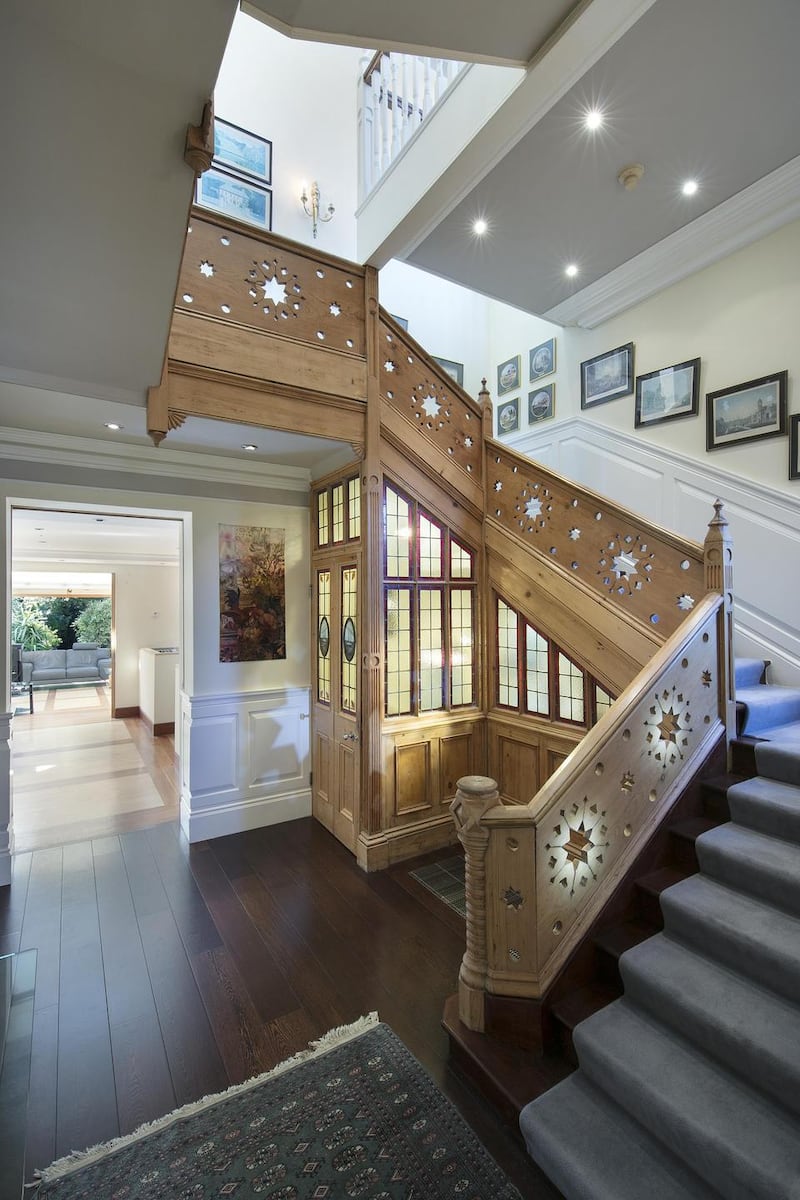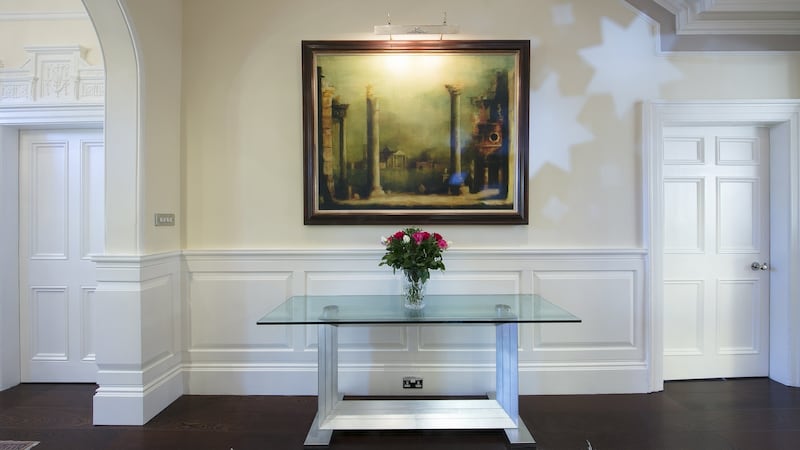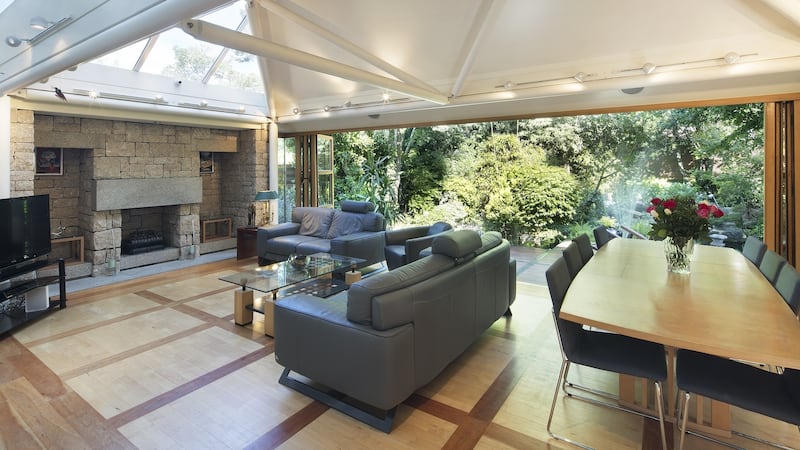For its owners, number 36 Sandymount Avenue has been a house of surprises. Before buying it in 1972 Martin and Joyce Henihan had lived in Iran where Martin worked as an architect for several years. While living in Tehran they struck up a friendship with a New York builder who had visited Ireland only once previously, staying on that occasion in the Sandymount home of his friend, Irish actor TP McKenna. Soon after they had settled at number 36 the Henihans invited the same friend to Ireland for a visit. He was more than a little surprised to arrive at the door of the exact same house he had stayed in previously.
Before it was the home of TP McKenna, the original owner, a developer/builder in the 1850s, built this house and the smaller semi-detached house next door for himself on the pleasure grounds of Holyrood Castle (now an apartment scheme). This was a time when mass suburban housing was just beginning to be built and industrial materials such as brick, glass and iron became affordable to a wider market.

0 of 7
The builder/owner clearly had an eye for design and wanted to incorporate some statement details of the era for his own home that might set it apart from similar-scale homes at the time. The intricate metalwork and string coursing on the façade – a bit like icing on a cake – provide an exterior flourish at number 36. Not least because the cast-iron metalwork was completed by the MacFarlane Foundry in Glasgow – master craftsmen responsible for the landmark Queen Victoria fountain at the entrance to Dún Laoghaire.
Martin only recently completed the full restoration of this exterior ironwork, including the colonnaded cast-iron, clay-tiled porch, with the help of his nephew, also Martin Henihan, a restoration specialist.
Central atrium
Once inside the double entrance hall with its cast-iron open fireplace and over-door decorative panel, another surprise awaits through the arch in the staircase hall. Here a 24ft central atrium is the fulcrum of the house and the link between the original and the modern three-storey rear. A stripped-back pitch pine staircase with circular star-carved motifs forms the centrepiece, with inset stained glass and a door opening down to a small guest toilet. Originally, the scullery to the rear of the house was accessed through this door.
Strategically placed footlights on the stairs amplify through the star motifs on the staircase onto the surrounding walls in a playful effect. Further light floods downward from a stained-glass ceiling light at the top of the atrium which was added by the current owners to reflect the staircase detailing.
Over the years there have been a number of additions and improvements to the house by the Henihans, who clearly share the original owner’s passion for architecture. (Martin is a former chairman of Henry J Lyons architectural firm.)

Along with the addition of Brazilian wenge hardwood floors and wainscoting in the original receptions in the 1990s, a contemporary extension to the rear takes in a kitchen-breakfast area and an airy pavilion living area with vaulted ceilings and a wall of folding glass that opens out to the teak external deck.
With a Portuguese granite block fireplace at one end, a full-length natural rooflight over the dining/sitting area and a fitted bar at the other end, you can see how, on a summer’s evening with the doors fully folded back, this is a great entertaining space.
Lovely flow
There is a lovely flow to the house, although great care has been taken to ensure foldback doors between areas can be closed off to create more private spaces. It’s a clever detail that may soon see a revival as our national obsession with open-plan living reaches a peak.

The Japanese-themed garden is a restful addition that has matured gently around the lily pond with its water fountain and lovely bedded moss stone. With palms, ferns, acers and a lovely old plum tree at its heart, it’s a low-maintenance, year-round space, and a nice patio area at the end catches the best of the northeast-facing aspect.
Upstairs, accommodation extends to five double bedrooms, three of which are ensuite. On the top floor a large bedroom was added in recent years with maple finish, pitched ceilings, dual aspect windows – including a large porthole – and views to the garden below.
Number 36 (or Lammermoor as it is named after the Scottish hills featured in a Sir Walter Scott novel) stands within less than a minute’s walk of Sandymount Dart station. Martin says he has the app timed to when the rail barrier is coming down he can leave the house and board the Dart without breaking stride. It is also a short distance to nearby Sandymount and Ballsbridge villages, and the RDS and Aviva stadiums.
With 370sq m (4,000sq ft) of interior space and a cobblelock driveway for four cars behind electronic gates, this would make a fine home for a growing family or any of the advancing army of technology high-flyers currently descending on this part of the city.
Number 36 Sandymount Avenue is for sale through Knight Frank seeking €3 million.

















